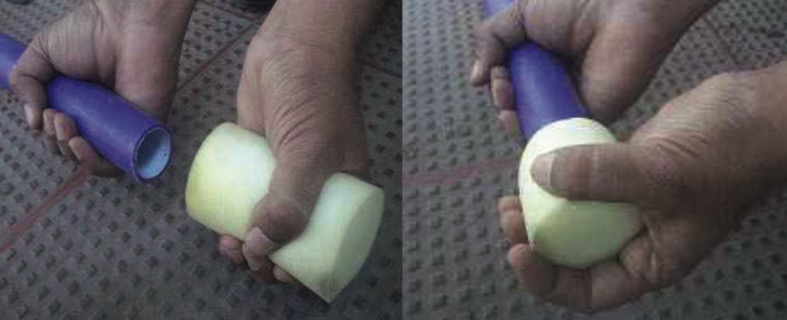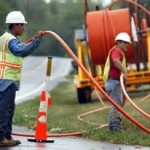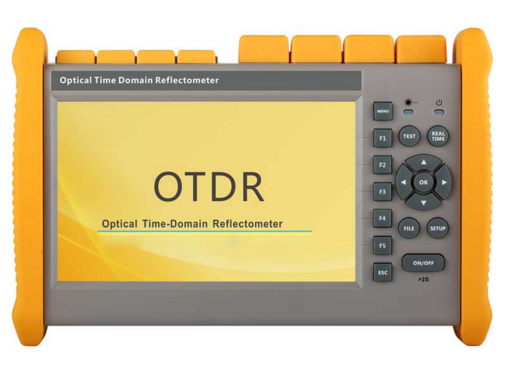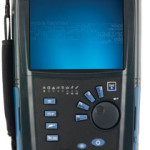The purpose of DIT (Duct Integrity Test) is to prove that the installed ducts are ready to use for blowing from one manhole to the other. DIT should be performed before blowing to avoid sudden surprises like missing section of ducts, improper coupling, and kink and blockage in ducts. The DIT is carried out with the help of compressed air and a suitable go-gauge sponge and mandrel of appropriate size, which is pushed inside from one end with pneumatic pressure and is thrown outside from the other end. The three steps outlined below should be performed to conduct integrity.
Step 1: Air pressure test
Duct continuity is verified by introducing compressed air from one end of the duct, and checking if air comes out from the other end of the duct. If no air emerges then fault point has to be identified and corrected before proceeding further. Duct leakage is verified with compressed air by attaching the compressed air unit head to one end of the duct, and attaching the pressure gauge to the other end of the duct. Compressed air at pressure of 10 bar is applied at the first end for 10 — 15 minutes and air pressure drop at the other end of the duct is measured. If the pressure reading remains the same (not reducing to zero) at other end for 5-10 minutes then there is no leakage in the duct. If the pressure reading drops to zero then there is leakage in coupler (that join two ducts), and duct is punctured. The following figure shows a pressure gauge fixed at one end of the duct to monitor air pressure.
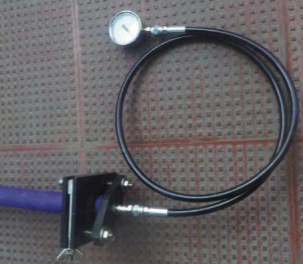
Step 2 : Shuttle test
The kink in the installed ducts is located by shuttle test. A suitable shuttle of size 70-80% of duct inner diameter is passed through the duct with the help of compressed air. If the shuttle comes out from the other end then the duct has no blockage and it is considered ready for cable blowing. If the shuttle does not come from the other end, then the duct is either kinked or blocked. To identify the blockage or kinked location, a transmitter is passed through the duct which will get stuck behind the shuttle and then the blockage point in the duct is tracked with the help of receiver. The blocked portion of the duct is dug out and replaced. The following figure shows a shuttle being inserted in a duct.

Step 3: Sponge Test
Very often mud and water are found inside an underground duct. In this test a sponge double the size of duct inner diameter is passed through by compressed air to clean the duct. The following figure shows a sponge being inserted in a duct.
